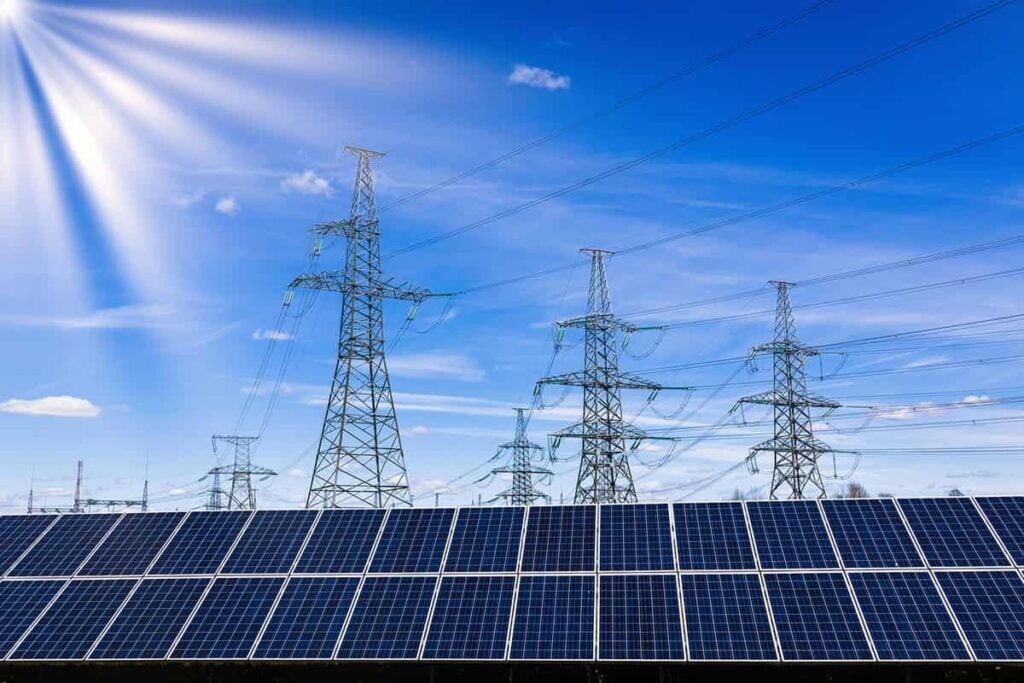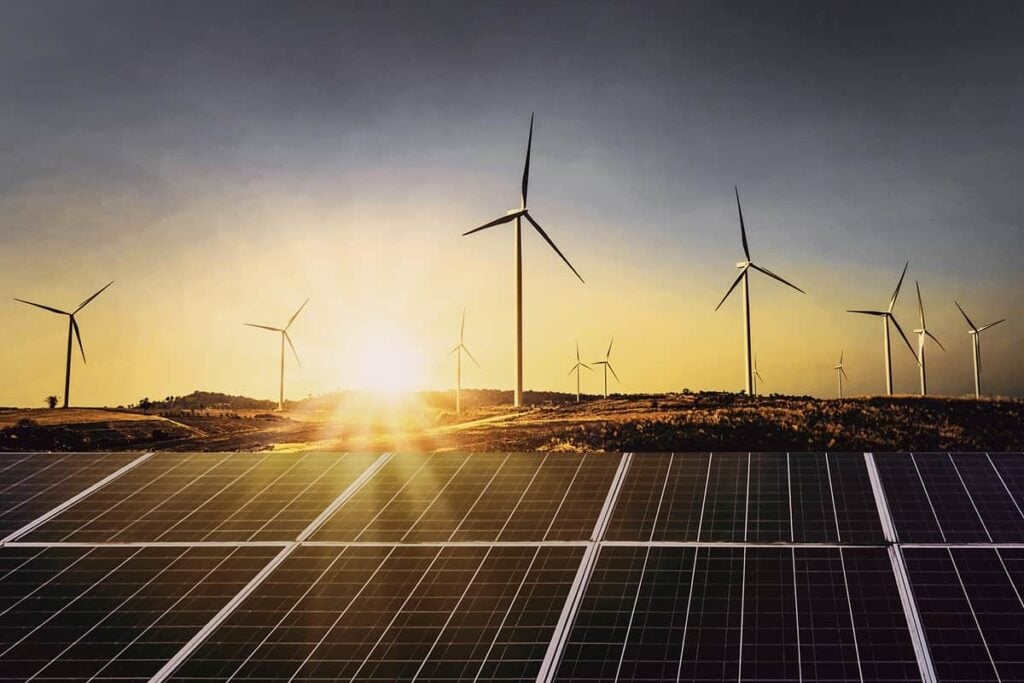3 Wave Energy Stocks Capturing the Ocean’s Power
Table of contents

Instead of idolizing movie stars (people whose job is pretending to be someone they’re not) athletes (people who play games for a living), and singers (people who sing songs), society ought to idolize those who have accomplished something. You may not know the name Victor Vescovo, but the man is an absolute legend. After climbing the highest peak on each of the seven continents, and skiing the Last Degree of Latitude at both the North and South Poles, he then dived to the deepest point in each of the five world’s oceans. He’s the first person to have visited the three deepest points in the ocean (the Horizon, Sirena, and Challenger Deeps), the latter of which he visited eight times. Meanwhile, we’re on our third attempt at Rosetta Stone Spanish.
Mr. Vescovo probably came away from his experience with a profound appreciation for the power of the oceans that cover 71% of our planet. It’s that same ocean which may provide renewable energy to power our televisions so we can all watch movies, sports, and concerts.
What is Ocean Energy?
The International Energy Agency (IEA) works with governments and industry participants to “shape a secure and sustainable energy future for all.” One of the collaboration programs formed by the IEA is called Ocean Energy Systems (OES). Founded in 2001, the industry body has 24 member countries across the globe, most of them being developed markets. OES covers all forms of energy generation in which seawater produces power through its physical and chemical properties. Their vision is to accelerate the viability, uptake and acceptance of ocean energy systems in an environmentally acceptable manner.
There are four different types of ocean energy we can harness according to OES:
- Tidal & currents: Energy from tides is harnessed by building various forms of dams across an estuary. Kinetic energy from tidal currents can be harnessed using different modular technologies.
- Waves: Kinetic and potential energy from ocean waves can be harnessed using different modular technologies.
- Ocean thermal energy: Thermal energy, due to the temperature difference between the sea surface and deepwater, can be harnessed using an ocean thermal energy conversion processes.
- Salinity gradient: At the mouth of rivers where fresh water mixes with salt water, energy associated with the salinity difference can be harnessed using a pressure-retarded reverse osmosis process.

OES provides a handy map of all ongoing ocean energy projects on its website. Looking at this global map we see there are sites and power stations across the globe, mostly focusing on wave and tidal energy. A lot of these are test sites, demonstration plants, or actual working plants that are not connected to the grid yet.
The Promise of Wave Energy
At the moment, wave energy is the most advanced method of extracting energy from the ocean, not to mention the only one with pure play stocks accessible to retail investors. And it does carry potential. According to the IEA, 2% of the world’s 500,000 miles of coastline exceeds a wave power density of 30 kilowatts per meter (kW/m). This carries an estimated global potential of about 500 gigawatts of electrical energy per hour based on a conversion efficiency of 40%. In other words, by just utilizing 2% of our coastlines, we can generate 4,383 terawatts of ocean power annually, enough to meet 16.4% of the world’s electricity needs (1 terawatt equals 1,000 gigawatts).
The UK and US have said ocean energy could provide 20% and 15% of their electricity consumption respectively. In comparison, all renewable sources accounted for around 11% of the United States’ energy consumption in 2018. The only way that’s going to happen is if the technology can prove to be economically viable so that investors can get behind it.
The Economics of Wave Energy
Levelized Cost Of Energy (LCOE) is the cost to build and operate an energy generation device over its lifetime divided by the total power generated. More importantly, the calculation excludes subsidies or penalties, making it a key economic indicator to compare all energy sources.
The National Ocean Economics Program, a US-based think tank and data provider on the economics of ocean and coastal resources, estimates the LCOE of wave power to be about two to three times higher than that of offshore wind power.

One megawatt hour (MWh) of energy generated equals 1,000 kilowatt hour (kWh) so this means 1 MWh of wave energy costs between $320 and $630. If we compare these numbers to the annual LCOE estimates of Lazard Investment Bank we see that wave energy lags far behind other renewables like solar or wind energy which sit in the double digits.

Until wave energy can compete with the most expensive dirty energy, it’s not going to find many takers.
Investing in Wave Energy Stocks
Given wave energy generation is so new, it’s no surprise three are only three pure-play stocks available.
Ocean Power Technologies Stock (OPTT)
Listed on the NYSE, Ocean Power Technologies (OPTT) is a $113 million company that specializes in an autonomous (not grid connected) device called the PowerBuoy. Last year’s revenues only amounted to a paltry $1.7 million, and the company has accumulated a deficit of $220 million which is being financed by convertible debt that dilutes existing shareholders heavily. The company is going nowhere fast as it spends very little on R&D ($4.3 million in 2020) which is also shown in its dismal share price performance – from over $3,000 a share to $2.21 a share in 14 years. You do the math.

Our investment methodology focuses a lot on looking for red flags. Any past signs of legal problems means a stock immediately gets placed in the circular filing cabinet. (Look no further than the dirt we dug up on Momentus and yesterday’s news about charges filed by the SEC against the company and CEO.) When a company’s history includes SEC investigations and class action lawsuits from shareholders, we’re definitely not down with OPTT.
Eco Wave Power Stock (WAVE)
Eco Wave Power (WAVE) is an Israeli company that was founded in 2011 and recently decided to debut on the Nasdaq as an ADR. Shares soared on the first day of trading upwards of +275% above the listing price of $8 a share causing Nasdaq to actually halt the listing five times on the second day of trading. Our more astute readers may see the problem here, but we’ll spell it out for all you meme stock lovers.
An ADR is when a company lists their shares in America while shares are being traded on another foreign exchange. In other words, the shares have been trading for a while already in Stockholm. At the beginning of this month, shares traded at a price of $1.10 per share. Here are the terms of the ADS listing:
Eco Wave Power Global AB (publ) is offering American Depositary Shares, or ADSs, in an initial public offering of its common shares, underlying the ADSs, in the United States. The initial public offering price is $8.00 per ADS. Each ADS represents the right to receive 8 common shares.
Credit: Eco Wave Regulatory Filing
This roughly adds up. With shares trading on the Stockholm exchange at around $1 a share, then one ADS would be worth $8 since it has the rights to receive 8 shares. So why are shares of the ADS trading at almost $12 a share? Who knows, who cares, but this thing has “Robinhood weekday warrior” written all over it. We wouldn’t touch the stock at these prices, no matter how great the business was. Problem is, it’s not that great.
With a current market cap of $67 million, Eco Wave is far below our minimum market cap, and even smaller when you consider they were a $44 million company before the hype hit. The company’s patented technology uses floaters and hydraulic motors to feed its own wave energy array in Gibraltar.

The array is connected to the grid in accordance with a Power Purchase Agreement (PPA), so we’re not sure why they don’t have any revenues yet. We’re even more concerned when they say the following:
To date, we have not generated any revenue from our WEC technology, and we do not know when, or if, we will generate any such revenue.
Credit: Eco Wave Regulatory Filing Document
When a company doesn’t have revenues, that’s a big red flag. When a company can’t even provide an estimate of when they’ll have revenues, but then goes on to talk about all this stuff in their pipeline, it’s an even bigger red flag. We’ll take another look when they breach $10 million in annual revenues.
Carnegie Clean Energy Stock (CCE.AX)
Carnegie Clean Energy Limited (CCE.AX) is a $22 million micro cap listed on the Australian Stock Exchange that’s developed its own take on the wave energy converter called CETO. It is a fully submerged buoy that sits a few meters below the surface of the ocean and moves with the ocean’s waves. This orbital motion drives a power take-off system that converts this motion into electricity.

Carnegie has a handful of small microgrid projects under its belt, mainly supported by grants and government funds. The company barely avoided liquidation in 2019 and was only saved by re-capitalization from companies affiliated with the three non-executive directors. Recent news talks about some miniscule revenue trickling in, how they’re predicting waves with machine learning, and more grants (we do not consider grants revenues).
We’ll say this again for the people in the back. We do not invest in “teams with dreams” and we’ve seen dozens of micro-cap stocks approach zero while issuing promises until the bitter end. We would never consider investing in any of these ventures, nor are we interested in learning more about their “technology milestones.” Show us traction in the form of meaningful revenues and we’ll come around for another look.
Other Wave Energy Stocks
There may be other wave energy stocks out there, but if they’re trading on an over-the-counter exchange, then we don’t want to hear about them. Likewise, there are probably many companies with wave energy projects they’re working on which are draining some R&D budget while not producing any revenues. What we’re looking for are stocks that provide pure-play exposure to wave energy with meaningful revenues to show for it, of which there are none.
Where the action might lie is in startups backed by venture capital firms who know all the pitfalls and problems and see a way through them. In a future piece, we might take a look at some of the more promising names in this space.
Conclusion
When it comes to renewable energy, we’re actively invested in the biggest renewable energy company in the world and a solar ETF. At the same time, we’re also exploring other clean energy sources like nuclear energy and uranium, both of which we don’t find very compelling. Similarly, wave power seems unattractive because it’s a relatively unproven technology that may need years of significant R&D investment before it can ever compete with cheaper sources of renewable energy.
Sign up to our newsletter to get more of our great research delivered straight to your inbox!
Nanalyze Weekly includes useful insights written by our team of underpaid MBAs, research on new disruptive technology stocks flying under the radar, and summaries of our recent research. Always 100% free.


















I am disappointed, no I am severely disappointed in the half-ass method in which this article was written. I subscribe to a number of online stock analytical organizations (including yours) and I am finding the quality of your analytics (where are they?) significantly lacking. You call yourself Nanalyze but what are you analyzing, where’s your data, your trends, etc.
I also find your analysis to be often late to the market. Up your analytics or lose a customer. Cheers!
Hi Randall,
It seems like this article has touched a nerve. This is literally the first piece of negative feedback we’ve ever had from a paying subscriber. Our founder will email you directly to enquire as to what your points of contention are here.
This was one of the first links that popped up in Google about wave energy stocks. Got to say I’m not impressed at all. Rather than mention or talk about companies that are doing things to keep an eye on or actually invest the author goes on to pick 3 companies and bash them. Never once mentioning any company that might be worth while. What’s the point of this? Based on the previous comment from someone who does subscribe I would share their sentiment about how poorly written this is and how it was a waste of my time. Certainly hasn’t made me want to see what else this site has to offer that’s for sure.
The author picked three publicly traded wave energy companies to talk about, that’s what these names have in common. None of these stocks we would ever consider investing in for reasons detailed in the piece.
What’s the point? The point is we wouldn’t invest in any of these three publicly traded stocks. Would you?